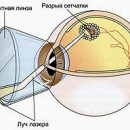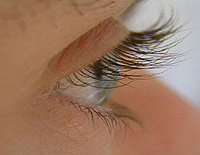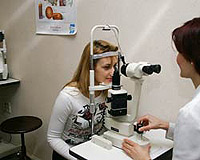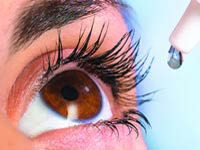No person is insured against cataracts. Often the development of cataracts is a complication of a number of diseases such as a general nature and eye pathology. Read this article and you will learn about modern cataract treatment methods.
Content
Cataract
With age, a person acquires not only everyday wisdom, knowledge and professional experience. In addition, unfortunately, physiological changes begins to occur in the body when the face between health and illness becomes small. Aging and wadering create a background that develops a whole bouquet of diseases, including organs of vision.
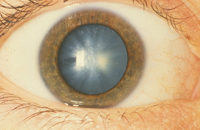 In the complex optical system of the eye, the crystal occupies a special place. This is the so-called biological lens, reminiscent of a biconvecake glass that does not have any vessels nor nervous endings, which allows a person to see well.
In the complex optical system of the eye, the crystal occupies a special place. This is the so-called biological lens, reminiscent of a biconvecake glass that does not have any vessels nor nervous endings, which allows a person to see well.
No person is insured against cataracts. Absolutely different factors may affect the formation of cataracts: harmful working conditions, improper nutrition, no vitamins, external radiation, such as radiation. Often the development of cataracts is a complication of a number of diseases such as a general nature and eye pathology. It may develop in patients with diabetes, after traumatic eye damage, with some inflammatory diseases of the organ of sight. Cataract, as a rule, appears first on one eye, for some reason more often on the left, and it is completely optionally developing with the same intensity in both eyes.
Signs of cataracts are diverse, but mostly vision disorder. At first it decreases slightly. Before your eyes can appear «Flying flying».
Some such a fortune last for years, other process of ripening cataract is pretty quickly. The crystal becomes more and more muddy, sometimes swells, increasing in the amount, which is usually accompanied by an increase in intraocular pressure and requires urgent treatment. In the stage of mature cataracts of visual acuity decreases so much that a person is distinguished by light from darkness and practically does not see objects. Naturally, no strongest glasses will help with Cataract: after all, an impenetrable barrier stands on the path of light rays — Muddy lens.
Prevention Qatarkty
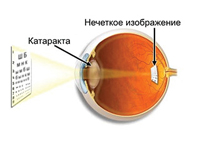 Medicinal preparations that can save a person from this disease are not yet developed. No special prevention. We can't exclude harmful effects from life — Radiation, radiation. But to warn you already have an existing initial stage of cataracts.
Medicinal preparations that can save a person from this disease are not yet developed. No special prevention. We can't exclude harmful effects from life — Radiation, radiation. But to warn you already have an existing initial stage of cataracts.
Created and widely used drops to help slow the ripening of cataracts. These drops that have received the common name of vitamin, contain enzymes, amino acids, vitamins, trace elements. Systematic use of such droplets improves nutrition and metabolic processes in lens, thereby holding back the development of cataracts. But it is impossible to completely stop the turbidity process, it is only possible to suspend for a while. Drops are produced by different firms and are intended for permanent use. What drops to use what the instillation mode should be — All this is solved by a doctor who takes into account the nature of the lens of the lens, the reasons that caused the development of cataracts concomitant diseases.
Cataract treatment
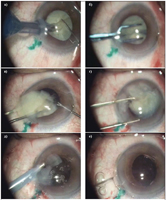 Today, the efficient and radical method of treatment of cataracts around the world is considered to be surgical. If the patient of working age, due to the developing cataracts, cannot fulfill the usual work or experiences difficulties in everyday life, it is not necessary to expect full closet of lens. Modern technologies allow you to remove cataracts of any maturity. Due to the wide introduction into the practice of treating the eye diseases of modern microsurgical technologies, all operational interventions over the removal of cataracts are small and proceed, as a rule, without serious complications.
Today, the efficient and radical method of treatment of cataracts around the world is considered to be surgical. If the patient of working age, due to the developing cataracts, cannot fulfill the usual work or experiences difficulties in everyday life, it is not necessary to expect full closet of lens. Modern technologies allow you to remove cataracts of any maturity. Due to the wide introduction into the practice of treating the eye diseases of modern microsurgical technologies, all operational interventions over the removal of cataracts are small and proceed, as a rule, without serious complications.
The most common method of cataract extraction — Removing the entire contents of the lens bag while preserving its back wall. This creates ideal conditions for implantation of artificial lens from polymer material. These developments are associated with the name of Academician Svyatoslav Fedorov . He did a lot so that this way is to find widespread use in our country. There is a version that came to the idea of creating an artificial lens absolutely by chance. One pilot got into an accident, and a shard glass, from which the cabin was made, hit him in the eye. The lens was removed, but the pilot did not lose sight — It turned out because of the glass, which remained in the eye.
But the first experience of implantation of artificial lens belongs to the English Ophthalmologist Ridley, who made this operation in 1949. In about the late 1960s, low-frequency ultrasound began to remove cataracts. This method was called facoemulsification, and in recent decades he received a particularly widespread. Removal of cataracts through small and ultra-low cuts makes this operation small-acting, reduces the risk of possible complications. True, with the help of this method, not all cataracts can be removed, since there is a risk of negative influence of ultrasonic oscillations on the fabric of the eye, first of all on the horn sheath.
After removal of cataracts, the eyes are deprived of a very important optical part — Crustalika. Refractive properties of other optical media — cornea, moisture of the front chamber, vitreous body — insufficient to obtain good vision. Therefore, the operated eye needs help, in additional correction. Remote lens function can perform glasses, contact lenses or artificial lens.
The most physiological and convenient method of cataract treatment — Implantation of artificial lens. But this does not mean that it can be applied in each case of removal of cataracts. The condition of the fabrics of the eye, vessels, some patient diseases may prevent the implantation of an artificial lens. But there are situations under which it is impossible to put an artificial crystal instead of remote. With some pathologies, this is fraught with complications. For example, chronic, with frequent exacerbations defeat joints, inflammatory eye diseases that will reduce the outcome of the operation to the minimum result.

